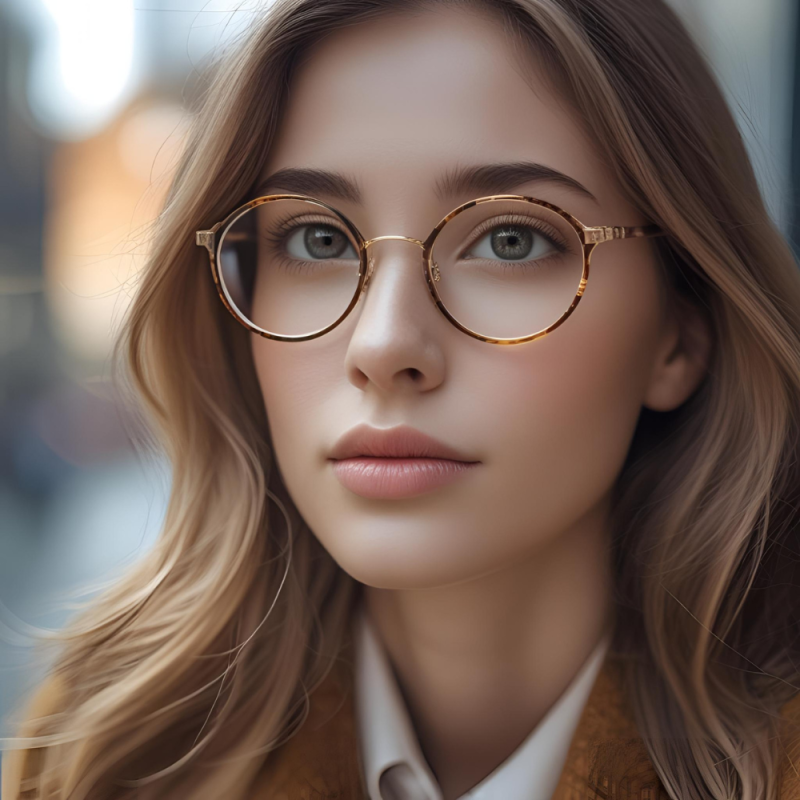Myopia, or nearsightedness, is increasingly common among children. Fortunately, myopia control glasses offer a promising solution to slow its progression.
As myopia, or nearsightedness, becomes increasingly prevalent among children, parents and healthcare providers are seeking effective methods to manage its progression. One such innovative solution is myopia control glasses. These specialized lenses are designed not only to correct vision but also to slow down the rate at which myopia worsens.
In this blog, we will explore how myopia control glasses work, their benefits, and the scientific evidence supporting their use. We will also discuss when to start using these glasses, how to combine them with other strategies, and how to care for them.
Understanding Myopia in Children
Myopia is a common refractive error where distant objects appear blurry while close objects can be seen clearly. This condition occurs when the eyeball is too long or the cornea is too curved, causing light to focus in front of the retina instead of on it.
In children, myopia often progresses rapidly, especially during school years. Factors contributing to myopia include genetic predisposition, extended near work (e.g., reading, screen time), and limited time spent outdoors.
What Are Myopia Control Glasses?
Myopia control glasses are specially designed lenses aimed at slowing the progression of myopia in children. Unlike regular prescription glasses, these lenses incorporate unique optical technologies that help manage the way light enters the eye, thereby reducing the eye’s tendency to elongate.
These glasses can be prescribed by an eye care professional and are typically worn just like regular glasses. They are suitable for children of various ages and can be an integral part of a comprehensive myopia management plan.
How Myopia Control Glasses Work
Myopia control glasses work by creating a peripheral defocus on the retina, which helps to slow down the elongation of the eyeball. Traditional glasses correct central vision but can cause peripheral hyperopic defocus, which may contribute to the progression of myopia.
The lenses in myopia control glasses are designed to reduce this peripheral defocus, thereby sending signals to the eye that help to control its growth. This mechanism helps in slowing the progression of myopia over time.
Benefits of Myopia Control Glasses for Children
One of the primary benefits of myopia control glasses is their ability to slow down the progression of myopia, reducing the risk of high myopia and associated complications such as retinal detachment, glaucoma, and myopic maculopathy.
Additionally, these glasses can improve a child’s quality of life by providing better visual acuity and reducing the dependence on stronger prescription changes over time. They are also non-invasive and easy to use, making them a convenient option for myopia management.
Scientific Evidence & Clinical Studies
Numerous clinical studies have demonstrated the efficacy of myopia control glasses in slowing the progression of myopia. Research indicates that these lenses can reduce myopia progression by up to 50% compared to regular prescription glasses.
For example, a study published in the ‘Journal of the American Medical Association’ highlighted the positive impact of myopia control lenses on children aged 6-12 years. These findings underscore the potential of myopia control glasses as an effective intervention.
When to Start Using Myopia Control Glasses
The ideal time to start using myopia control glasses is as soon as myopia is diagnosed in a child. Early intervention is crucial because myopia tends to progress rapidly during childhood and adolescence.
Parents should consult with an eye care professional to determine the appropriate age and ensure that the glasses are tailored to the child’s specific needs. Regular follow-up appointments are also important to monitor the progression and make necessary adjustments.
Combining Myopia Control Glasses with Other Strategies
While myopia control glasses are effective, combining them with other myopia management strategies can enhance their effectiveness. These strategies include increasing outdoor activities, reducing screen time, and ensuring proper lighting during near work.
Additionally, other interventions such as atropine eye drops and orthokeratology lenses may be recommended by an eye care professional based on the child’s specific condition.
Limitations & Considerations
Despite their benefits, myopia control glasses may not be suitable for every child. Factors such as the child’s age, degree of myopia, and lifestyle should be considered before prescribing these lenses.
Additionally, while these glasses can slow myopia progression, they do not cure it. Continuous monitoring and a comprehensive myopia management plan are essential to achieve the best outcomes.
Caring for Myopia Control Glasses
Proper care and maintenance of myopia control glasses are essential to ensure their effectiveness and longevity. Children should be taught to handle their glasses with care, clean the lenses regularly with a microfiber cloth, and store them in a protective case when not in use.
Regular check-ups with an eye care professional are also important to ensure that the glasses continue to fit well and provide the intended benefits.

